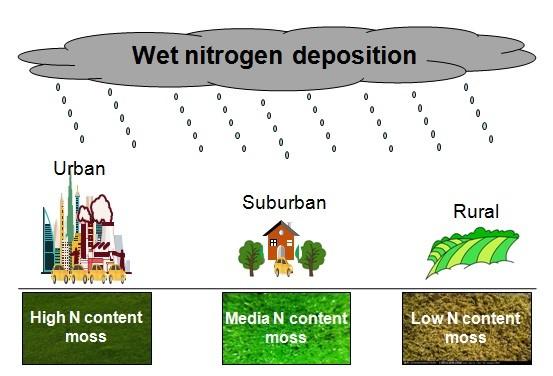
Credit: Tao Huang
Atmospheric reactive nitrogen (N) deposition has more than doubled over the past century. It is very important to estimate the rates and sources of N deposition because it’s considered as a main factor of ecosystem structure changes, such as soil acidification, water eutrophication and biodiversity losses, especially in countries with high N deposition, such as China. However, it is very difficult to obtain monitoring data of atmospheric N deposition because of the complexity of N species and the diversity of deposition forms.
Mosses are very widespread. Almost all of nitrogen for mosses growth are from air and rainfall. Therefore, many researchers investigate N deposition levels and its effects by using moss, especially in Europe and Southwest China. However, whether mosses can be used to monitor atmospheric N deposition in the Yangtze River Delta (YRD) region has yet to be determined.
“We collected rainwater and moss tissue at six monitoring sites in the YRD with three land-use types–urban, suburban, and rural and analyzed moss (Haplocladium microphyllum) N content, wet N deposition rate, and their N isotope signatures.” says Dr. Tao Huang, from the School of Geography, Nanjing Normal University.
Based on this study, they found a significant linear relationship between moss N content and wet N deposition rate. In addition, they also determined a consistent decreasing trend for moss N content and wet N deposition from urban to suburban to rural areas. The more negative N isotopic signature of suburban and rural mosses indicated N is mainly released from agricultural ammonia, while the less negative N isotopic signature of urban mosses highlighted a main influence from fossil fuel combustion and traffic emissions. The findings are published in Atmospheric and Oceanic Science Letters.
“The important revelation of our study is that the epilithic moss Haplocladium microphyllum can bio-monitor the rates and sources of atmospheric N deposition in the YRD, making up for the lack of monitoring data of N deposition,” concludes Dr. Huang.
###
Media Contact
Ms. Zheng Lin
[email protected]
86-108-299-5053
Original Source
http://159.
Related Journal Article
http://dx.




